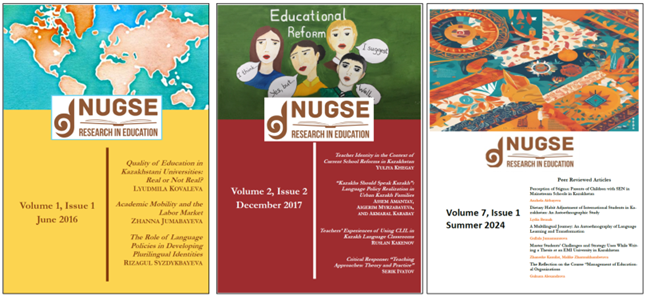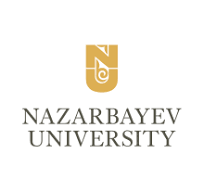
Eight steps to launch a student-led peer-review journal
The ability to publish academic work is an increasingly important professional skill for university postgraduates worldwide. In Kazakhstan, where most university students come to English as a second or other language, contributing to disciplinary conversations in English-medium international journals can be daunting. Here, we’ll describe how an in-house student-led peer-review journal can help develop research literacy for a new generation of education professionals.
Background and value of an in-house student-led journal
The Nazarbayev University Graduate School of Education Research in Education journal (NUGSERiE) was first conceived in 2015. At the time, Kazakhstan was climbing the international rankings of published articles by number of documents (from 97th in 2010 to 68th in 2015), but hadn’t ranked by citations per document (216th in 2010 and 217th in 2015). Although the country’s research community was comparatively more productive, it did not mean that research quality was improving.
- A DIY guide to starting your own journal
- How to sustain a journal and beat the academic publishing racket
- Democratising research through open access journals
This indicated that universities were not sufficiently supporting the suite of skills and dispositions related to research literacy – inquisitiveness, critical evaluation, organisation, knowledge construction and communication. In addition, academic programmes often overlooked the importance of academic socialisation.
To support doctoral students in meeting strict requirements to publish in Scopus-indexed journals prior to graduation, we aimed to provide opportunities for students to collaborate, experience the publication process and gain leadership experience. For this purpose, we put out a call for student editors in the autumn of 2015 and published our first issue in June of 2016.
Eight steps to creating a student-run peer-review journal
Step 1: Find a willing faculty member to serve as adviser and guide as a part of their teaching or service. Philip was our academic English instructor and founding chief editor from 2016 to 2018. Andrew took over this role in 2023 following a break during the Covid-19 period, and continues today as faculty adviser.
Step 2: Recruit editorial board members. We began with three managing editors (one PhD student, one MSc student, one alumna) and seven board members representing each of our school’s programmes.
Step 3: Task the editorial board with drafting a scope and aims statement. We used that to decide on a name and logo for the journal.
Step 4: Create online and in-person presence. The university library has a permanent URI for the journal. We created a social media page and post tips about academic publishing, and regularly visit classes and network with faculty to promote the journal.
Step 5: Secure institutional support in providing website server space (we used OJS, free journal administration software), IT support, printing costs and infrastructure. We used the editorial board materials and social media posts to make our case.
Step 6: Recruit authors and peer reviewers. We included master’s and doctoral students, alumni and faculty, although faculty could only submit if co-authoring with a student.
Step 7: Train authors and peer reviewers. We hosted workshops to help authors adapt theses and other course writing to meet the journal’s article types, and required peer reviewers to attend a practice session using a sample paper and reviewer rubric.
Step 8: Share your successes, get feedback from participants and build the journal’s identity and reach. We have presented in local conferences and drafted collaborative research about the journal, always offering students opportunities to take on leadership roles outside the university.
Benefits and ongoing challenges
In a survey of 37 participants, journal members reflected on participating in the life of the journal. Reviewers reported gaining confidence in seeing themselves as qualified contributors in the research community and how their reading was making them better writers. Authors commented that going through anonymous peer review emboldened them to submit their manuscripts to international journals, and that participation in the journal shifted their view of authorship from one of transmission and citation to a community of practice. Editors were involved in training new peer reviewers and mentioned becoming more careful reviewers themselves, paying less attention to grammatical accuracy and more to argument building.

These benefits did not remain within the walls of our university, however, as GoogleScholar automatically indexed our journal page, and individual manuscripts began to be cited in conference proceedings, graduate theses and regional journals. By these metrics, students are not merely practising research literacy – they are genuinely participating in the wider academic research community.
While we encourage others to create student-run journals, we must point out some hurdles we have faced along the way. First, while our school continues to pay for a batch of printed copies, we lost the institutional support for the website server during a Covid-imposed hiatus. Second, our peer reviewer pool has gradually become dominated by faculty members, as the recruitment and training of student and alumni peer reviewers has suffered due to staffing shortages and heavy workload for the faculty advisers. Notwithstanding these challenges, we look forward to ushering the journal into its 10th year in 2025.
Andrew Drybrough is an instructor and Philip Montgomery is assistant professor, both at Nazarbayev University.
If you would like advice and insight from academics and university staff delivered direct to your inbox each week, sign up for the Campus newsletter.
Additional Links
Special thanks to all the students, alumni, and faculty who have made this project possible.
Contact andrew.drybrough@nu.edu.kz for more information.




